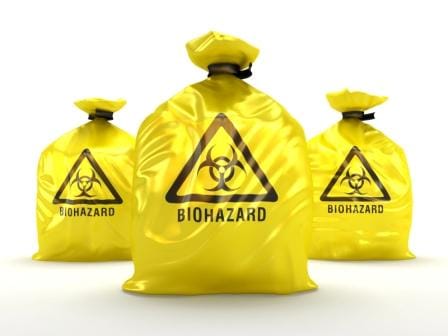Hazardous Biological Agents
Hazardous biological agents, as defined under the Regulations for Hazardous Biological Agents, OHS Act (85 of 1993), means any micro-organism, cell culture or human endoparasite, including any which have been genetically modified, which may cause any infection, allergy or toxicity, or otherwise create a hazard to human health.
Hazardous biological agents are sub-divided into four groups with Group 1 agents unlikely to cause human disease, whereas Group 4 agents may cause severe human disease and is a serious hazard to exposed persons.
Persons at work may be infected by hazardous biological agents via various routes of transmission, such as physical contact, droplet transmission, airborne transmission, as well as vector-borne and common vehicle transmission.
Biological agents include bacteria, viruses, fungi, other microorganisms and their associated toxins to which persons may be exposed during the course their employment. Biological agents are widespread in the natural environment are found in water, soil, plants and animals. Because many microbes reproduce rapidly and require minimal resources for survival, they are a potential danger in a wide variety of occupational settings.
Most exposed occupations may include those in food production, agriculture, farming, hospitals and laboratories, municipality (refusal and sewage workers) and office buildings from wallpapers, carpets, damp buildings and ventilation systems.
Exposure to hazardous biological agents in the workplace is governed by the Regulations for Hazardous Biological Agents, OHS Act (85 of 1993), and requires that employers must ensure the following:
- Conduct a risk assessment every two years.
- Carry out monitoring in accordance with a suitable procedure that is standardized, sufficiently sensitive and of proven effectiveness.
- Implement engineering control measures, administrative control measures and / or use of personal protective equipment and facilities to prevent or, where this is not reasonably practicable, adequately control the exposure risk presented to employees.
- Provide medical surveillance for exposed employees.
We can assist you to comply

